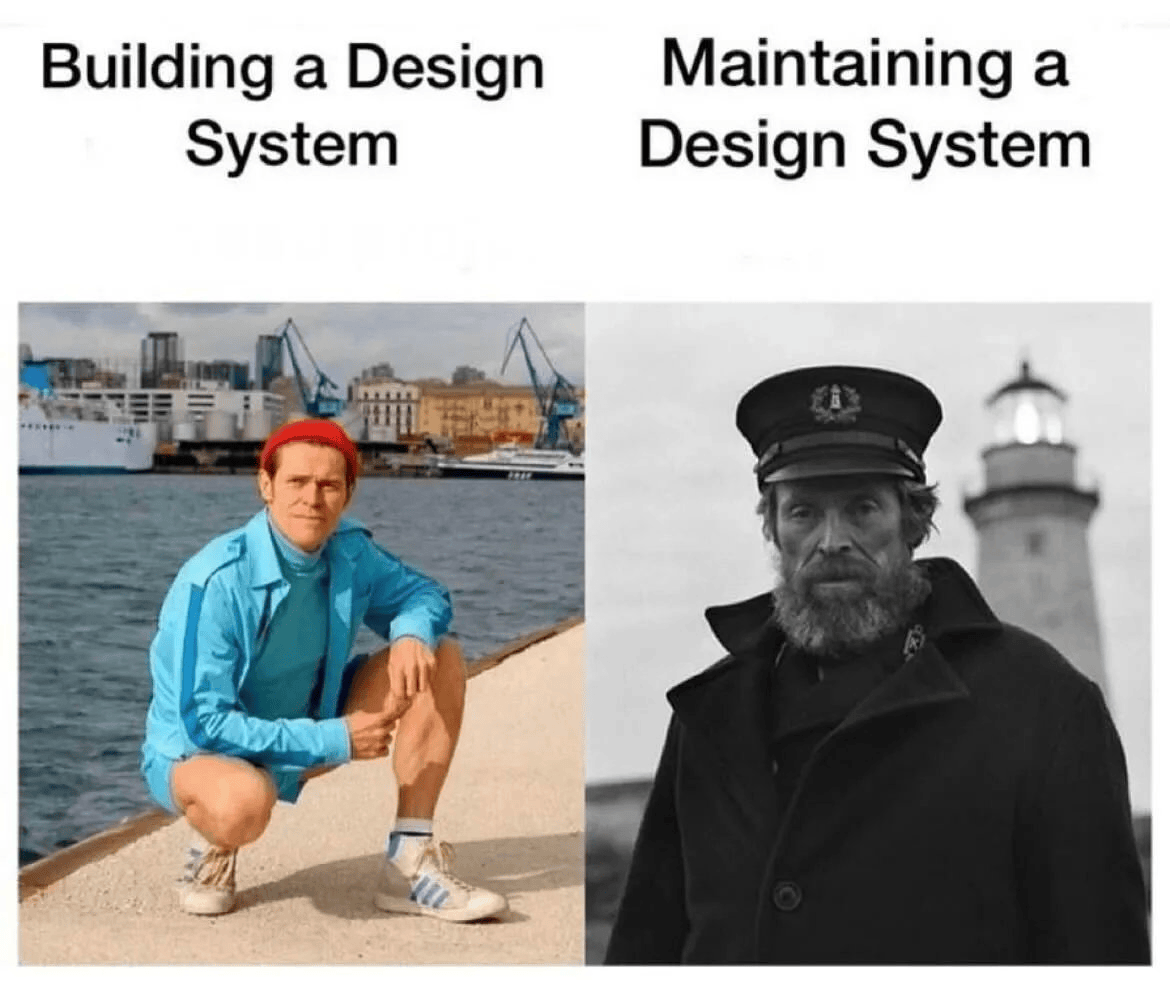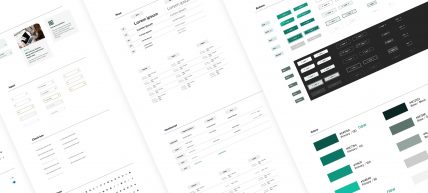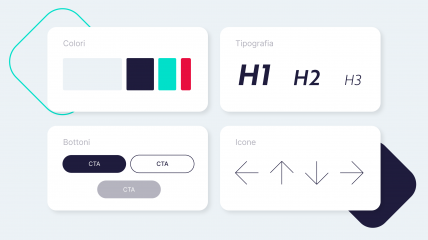Thinking
The evolution of Design Systems: Understanding and avoiding hidden pitfalls
A well-conceived Design System promises efficiency, consistency and scalability, but it's not without its challenges. Addressing these challenges is essential to maximise benefits and ensure a return on investment.

While Design Systems offer many benefits in terms of standardisation, consistency, and operational efficiency, there are challenges and considerations involved in implementing and managing them. A successful Design System is the result of overcoming various challenges - some won, some lost, but all necessary.
This article examines some of the common difficulties organisations face in implementing and managing a Design System and offers practical solutions by analysing common problems and providing concrete suggestions for overcoming them.
Engaging people: The heart of a successful Design System
Creating and implementing a Design System requires a significant initial commitment of time and resources. Time must be invested in researching, designing and documenting components, as well as training teams to use the system. This initial investment can be difficult to justify for some organisations, especially those with limited resources, but it is critical to the ROI of a Design System.
To succeed, a Design System needs all team members' full commitment and buy-in, including designers, developers and stakeholders. However, getting all team members to adopt the system and follow its guidelines can be challenging. Time and effort must be invested in training and communication to ensure that the Design System is not only adopted but also used effectively.
Common challenges
- Change resistance: Seeing a Design System as an additional burden rather than an opportunity, many teams may resist its introduction. It is important to communicate the benefits and show concrete examples of how the design system can simplify daily work.
- Ongoing education and assistance: Implementing a design system is not a one-off event, but an ongoing process that requires training and support. Without a deep understanding of how to use the system, teams may revert to old habits, compromising the consistency and effectiveness of the system itself.
Suggested solutions
- Workshops and onboarding sessions: Adoption can be facilitated by organising workshops and tailored training sessions for different teams. These sessions should be interactive, allowing participants to experiment with the design system and understand how it can simplify their work.
- Design system ambassadors: These individuals can guide other team members, answer questions, provide support during implementation and consistently promote the benefits of the system. This makes the design system more easily integrated into the culture, making adoption more natural and less forced.
- Continuous feedback: The creation of an open communication channel for the collection of feedback from the team is essential for the development of the design system. People need to feel that they are heard and involved in the process of continuous improvement.
Evolving it: a dynamic and ongoing process
A design system is not static. It evolves to meet the changing needs of the product and the organisation. Zeroheight conducts an annual survey of the state of design systems around the world, and the findings are fascinating. One of the issues highlighted is the lack of a clear plan (also known as a governance system) for its evolution. This can lead to a system becoming outdated and misaligned with current needs. However, the maintenance and updating of a design system can be complex and require a significant amount of resources.
The maintenance of a consistent user experience across a range of platforms and devices can be a challenge. Design systems need to be designed to be flexible and scalable to adapt to different needs for designing and interacting with mobile, desktop and other devices.
Common challenges
- Obsolescence: Without ongoing maintenance, design system components and guidelines can quickly become obsolete, especially in a rapidly evolving digital environment.
- Scalability: As the organisation grows, the design system needs to scale. This may involve the addition of new components, the updating of existing policies, or the adaptation to new technologies and platforms.
Suggested solutions
- Plan for maintenance and updates: Establishing a regular process for reviewing and updating the design system is essential. This process should include the review of existing components, the introduction of new technologies and the adaptation to industry trends.
- Collaboration across teams: The involvement of different teams in the maintenance of the design system can help ensure that the system remains relevant and useful. Regular reviews should include input from developers, designers, and business stakeholders.
- Periodic audits: These can be conducted every six months or annually. They should include a review of existing components, policies and design practices to ensure they still meet current product and market needs.
It's more than just a UI kit: Understanding the difference and the scope

A design system is often perceived as a simple collection of ready-to-use UI components, but this narrow view can limit its true potential. A design system encompasses a broader ecosystem of principles, policies and processes that affect the overall user experience and brand consistency, far beyond the management of graphical interfaces.
Adopting this broader perspective not only improves consistency and efficiency but also creates more meaningful user experiences that are aligned with the organisation's mission.
Common challenges
- Reducing to a simple UI kit: Treating the design system as a simple user interface kit can lead to a lack of consistency in the user experience, with components not designed to work together harmoniously. This approach limits the potential of the design system and can create disconnects between an organisation's different products and services.
- Lack of a holistic vision: When a design system is seen only as a tool for managing interfaces, the importance of connecting these elements to the brand's vision, mission and principles at a higher level is lost. This can lead to a disconnect between the design of the interface and the strategic goals of the organisation.
Suggested solutions
- Define principles and guidelines: In addition to UI elements, a good design system should contain guidelines and principles that explain how and when each element should be used. To ensure that the design system supports a consistent design strategy at all levels, these principles should be linked to the organisation's vision and goals. This includes not only the interface level but also the design of products, services and even brand identity.
- A design ecosystem: In a complex organisation, the design system for the interfaces is only one of many levels of the design system. We can think of an organisation as a series of 'restaurants' with different menus but a common DNA. Similarly, an organisation can have multiple design systems - for interfaces, products, services and brands - that operate independently but need to be linked by common principles and coordination processes. The key is to create links between these different systems to ensure that decisions made at one level positively influence the others while maintaining the flexibility needed to adapt to the specifics of each context.
- Extensive and accessible documentation: Documentation of the design system should be more than just a catalogue of components. It should include use cases, best practices, how to implement examples, and detailed explanations of the principles guiding the design. This will not only help teams use the system consistently but will also provide a broader context that links the user interface to higher-level design principles and business goals.

Implementing and managing a design system is an undertaking that requires commitment, resources and a long-term vision. Although there are significant challenges, such as those we have analysed previously, the benefits far outweigh the obstacles.
A properly managed design system can become a powerful asset in improving efficiency, consistency and innovation within an organization. That is why, in all our projects, we always start, whenever possible, by organising what already exists and creating components and tools to consolidate it. We also define management processes and coordination methods with developers, marketing, brand managers and stakeholders in general.
Rather than being discouraged by difficulties, see each challenge as an opportunity to strengthen and maximize your design system. Start by assessing the current state of your design system and plan the next audit or update workshop to ensure it evolves with your organisation. This is the only way to ensure that the design system will continue to be a strategic asset that is capable of supporting growth and innovation in the long term.


